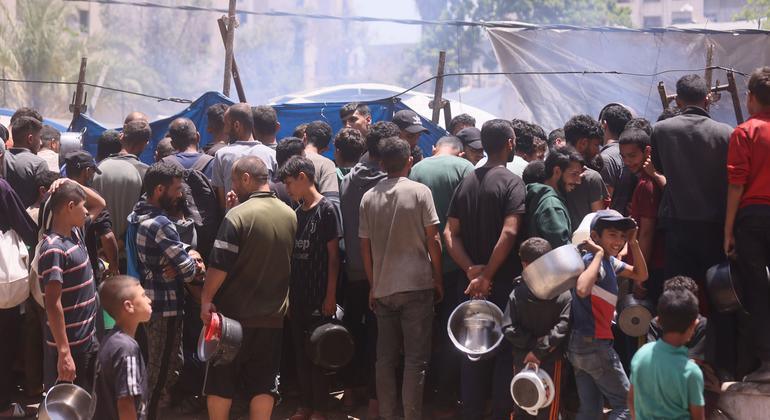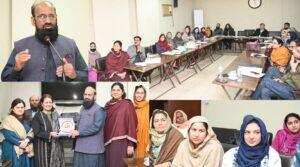“These injuries that change life represent a quarter of all reported lesions, of a total of more than 167,300 people injured since October 2023,” said Rik Peeperkorn, representative of the Western Occisora and Gaza.
More than 5,000 people have faced amputation and other serious injuries to the arms, legs and spinal cord.
Informing journalists in New York for a video link by Gaza, Dr. Peeperkorn detailed the generalized trauma needs, added that dozens of rehabilitation workers have been killed, with facilities close to collapse.
“At the moment Less than 14 of Gaza’s 36 hospitals remain partially functionalwhile less than a third of the rehabilitation services prior to the conflict are operating, with several imminent closure, ”he said.
Pregnant and trapped
Maternity and childbirth services in the war devastated by war have also been seriously affected.
The UN reproductive health agency, UNFPA, estimates that 55,000 pregnant women are trapped in GazaAccountant with displacement, bombardment, severe hunger and malnutrition.
Approximately 130 babies are born daily, with More than a quarter delivered by Cesarean section.
Estimates indicate every week in Gaza, at least 15 women give birth outside a health center without qualified help and around One in five newborns are born premature or suffer under birth weight.
James Elder, from the UN Children’s Fund (UNICEF) described the scene in the Al Aqsa and Nasser hospitals: “There is a real level of fear and stress between the community here in the city of Gaza and in the south.
“Seeing a large number of mothers with newborns in the runners, hospitals simply overload due to the devastation of medical care.”
Deep psychological impact
Conflict -related injuries also have deep psychological scars.
“The survivors fight with traumaDaily loss and survival where psychosocial reference services are still scarce, ”said Dr. Peeperkorn, urging investment in rehabilitation linked to mental health and disabilities.
Who emphasized the urgent need for fuel, medical supplies, prostheses and assistance devices, together with protection for health workers. Medical evacuation is another priority.
More than 15,000 people, including 3,800 children, need specialized treatment outside Gaza.
“We need many more countries to accept patientsand the restoration of the background of the West Bank and Jerusalem East, ”said Dr. Peeperkorn.
The displacements continue
Meanwhile, humanitarian officials highlighted the widest crisis facing civilians, without any place to go.
The UN deputy spokesman Farhan Haq said that more than 6,700 people fled from northern Gaza to the south in a period of 10 am on Wednesday alone, which increased to more than 417,000 displacements since mid -August.
“Families in southern Gaza are found in these and other overpopulated shelters or improvised tents along the coast. Many others are sleeping outdoors, often in the midst of rubble,” he told Daily News brief in New York.
“The newcomers in the South face poor sanitation, without privacy or security, and a high risk that children separate from their families, all while exposing explosive ammunition.”




